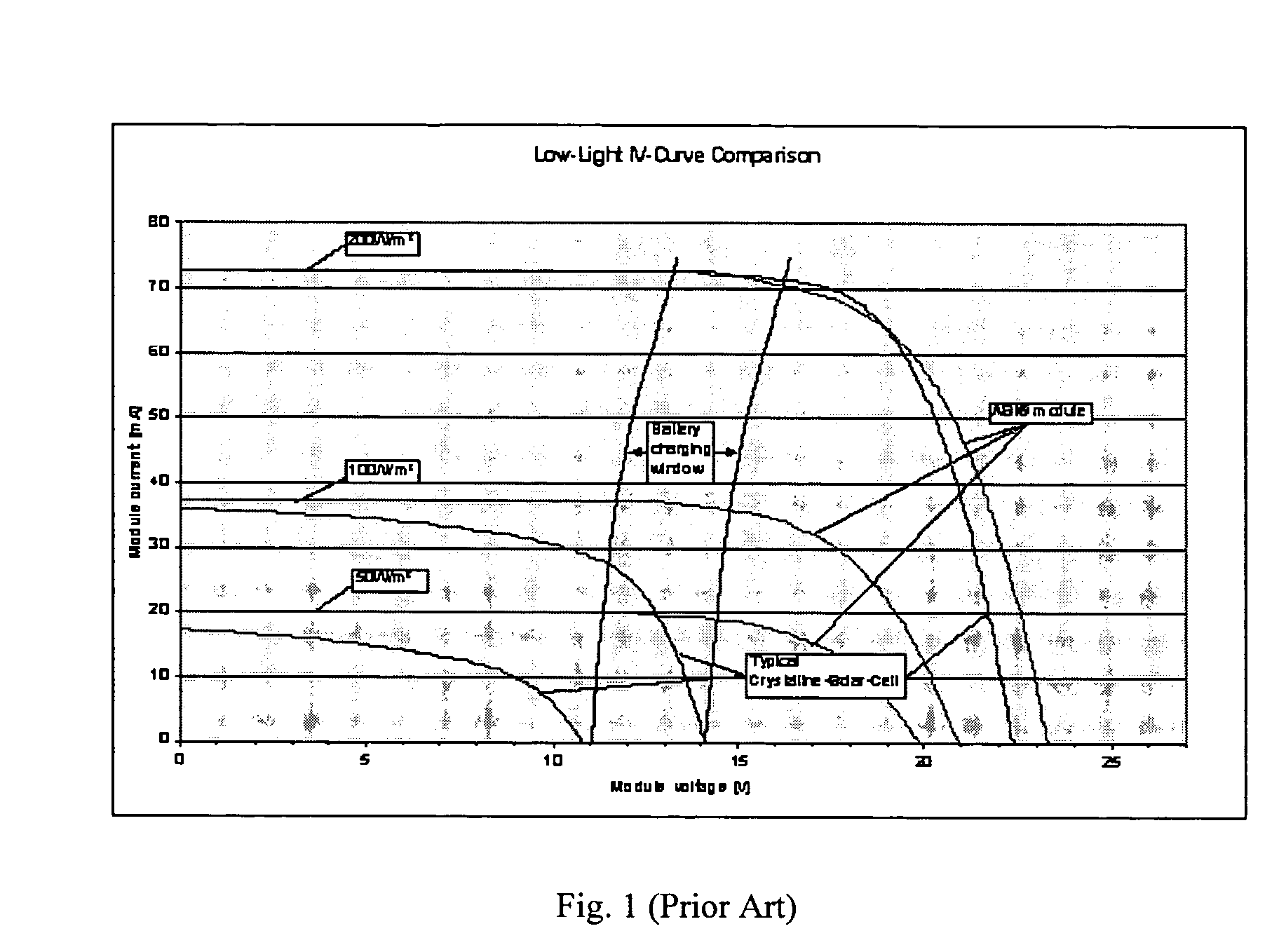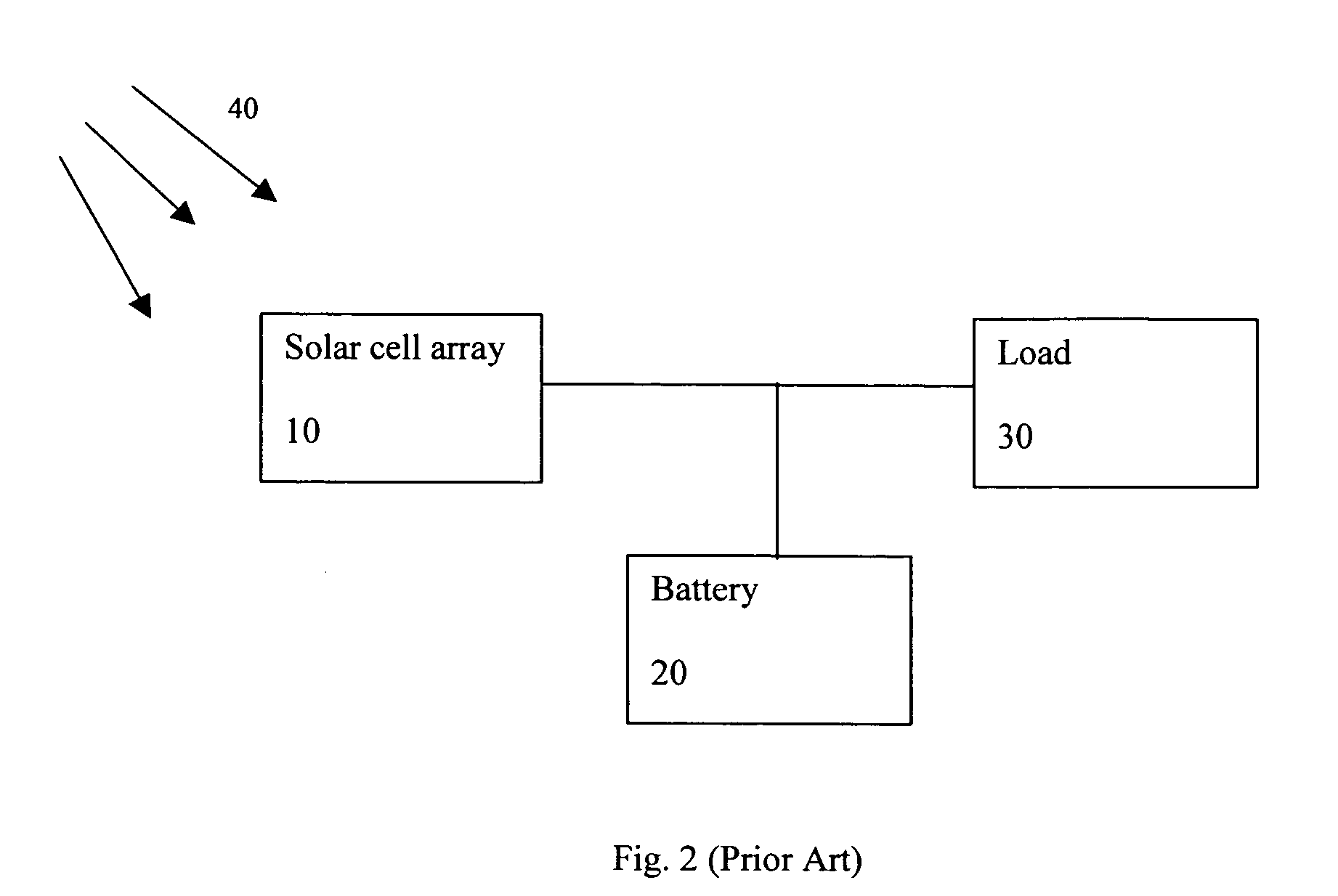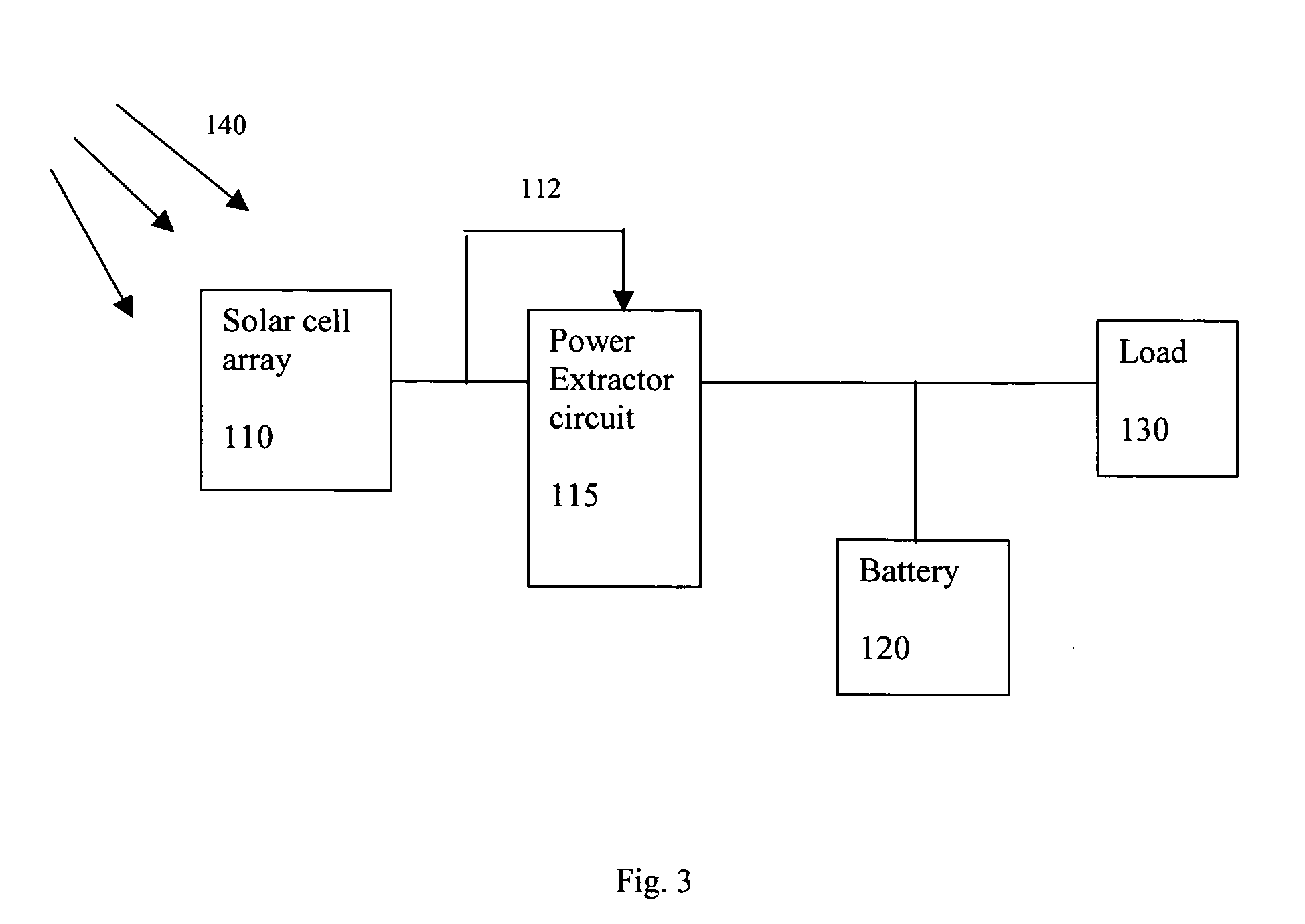Power extractor circuit
a power extractor and circuit technology, applied in the direction of electric vehicles, electric generators, transportation and packaging, etc., can solve the problems of insufficient individual small-power packets, insufficient power generated by solar panels, inactive cell arrays, etc., and achieves low power, high current, and high voltage
- Summary
- Abstract
- Description
- Claims
- Application Information
AI Technical Summary
Benefits of technology
Problems solved by technology
Method used
Image
Examples
Embodiment Construction
[0025] Solar cell arrays are excellent source of power since they can be operated anywhere under sunlight. However, improving the efficiency of the solar cell array is a major concern since solar cell array normally does not operated under low light conditions. Specifically, since almost all solar cell arrays come with a rechargeable battery, under the weather conditions that do not allow the solar cell array to produce adequate power to charge the battery, the solar cell array is inactive.
[0026] The present invention discloses a circuit to improve the efficiency of a solar cell array, and specifically to operate the solar cell array under low light conditions. The present invention is also suitable for low quality solar cells and flexible solar cells, because even in the best sunlight conditions, many of these solar cells could still produce less power, as much power as the high quality, single crystal silicon solar cells under low light conditions.
[0027] The basic component of t...
PUM
 Login to View More
Login to View More Abstract
Description
Claims
Application Information
 Login to View More
Login to View More - R&D
- Intellectual Property
- Life Sciences
- Materials
- Tech Scout
- Unparalleled Data Quality
- Higher Quality Content
- 60% Fewer Hallucinations
Browse by: Latest US Patents, China's latest patents, Technical Efficacy Thesaurus, Application Domain, Technology Topic, Popular Technical Reports.
© 2025 PatSnap. All rights reserved.Legal|Privacy policy|Modern Slavery Act Transparency Statement|Sitemap|About US| Contact US: help@patsnap.com



